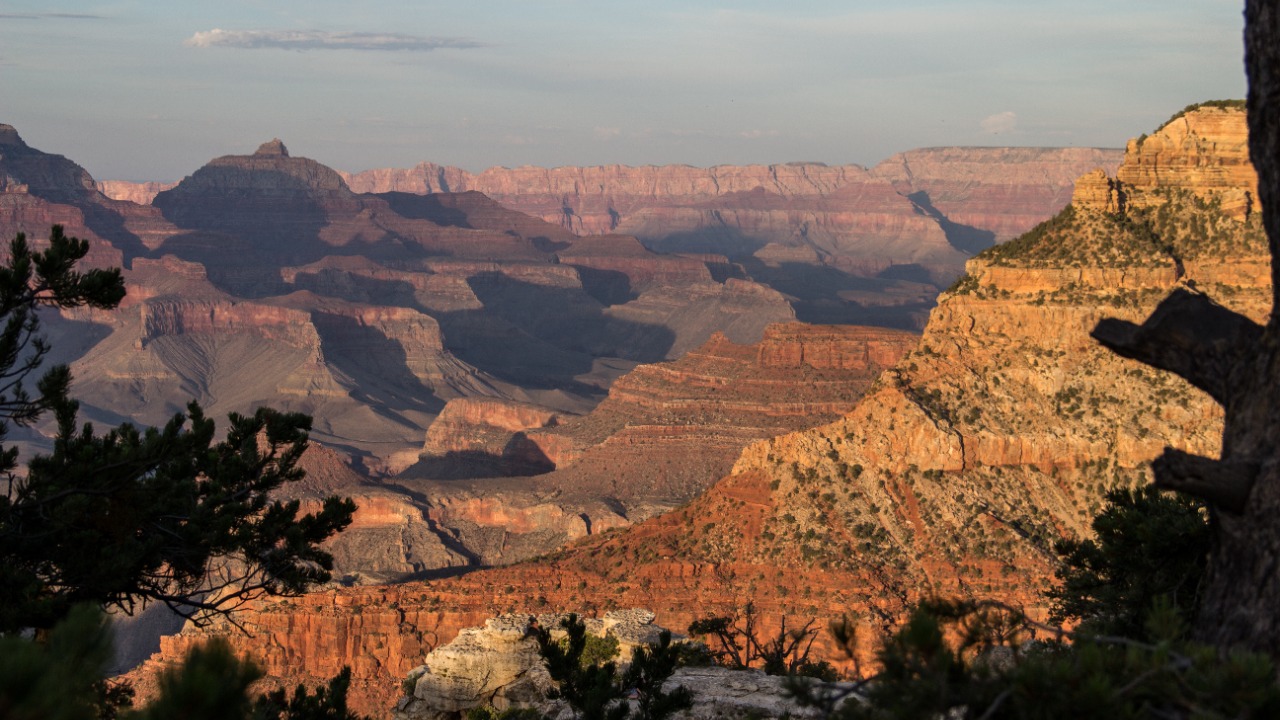
A recent study from the University of New Mexico has proposed a fascinating theory about the formation of the Grand Canyon. The research suggests that the Meteor Crater impact, which occurred approximately 50,000 years ago, may have triggered a massive landslide and subsequent floods in the Grand Canyon, reshaping the landscape and challenging traditional views on its geological history.
The Meteor Crater Impact Event
Located about 40 miles east of Flagstaff in northern Arizona, Meteor Crater is a well-preserved impact site. The crater was formed by a meteor approximately 50 meters in diameter traveling at a speed of 12.8 kilometers per second. Geological evidence dates the impact to around 50,000 years ago, and the immediate effects were far-reaching. Ejecta blankets and shock waves extended hundreds of kilometers from the impact site, demonstrating the immense energy released during the event, equivalent to 20 megatons of TNT. This energy release potentially influenced regional tectonics far beyond the immediate site, as explored in recent analyses.
Geological Context of the Grand Canyon
The Grand Canyon, located in northwestern Arizona, is traditionally believed to have been formed over millions of years by the erosion caused by the Colorado River. However, emerging evidence suggests that rapid, cataclysmic events may have played a significant role in its formation. The canyon, which reaches depths of up to 6,000 feet, exposes layers that reveal 2 billion years of Earth’s history. One such event is a massive landslide that occurred around 50,000 years ago, which is believed to have dammed rivers and altered drainage patterns, as linked in UNM research.
The UNM Study’s Key Findings
The University of New Mexico’s investigation, led by a team of researchers, analyzed seismic data and geological samples to draw a connection between the Meteor Crater impact and a specific landslide in the Grand Canyon. The study concluded that the shock waves from the meteor impact triggered the landslide, which blocked the ancestral Colorado River and caused upstream flooding. This conclusion was reported on July 15, 2025. The evidence from cosmogenic nuclide dating confirmed that both events occurred approximately 50,000 years ago, supporting a causal relationship as detailed in the UNM study.
Mechanisms Linking Impact to Landslides
The meteor’s impact generated seismic waves that reached far beyond the immediate impact site, destabilizing slopes in the Grand Canyon area and leading to a landslide estimated to involve billions of cubic meters of material. The landslide had profound effects on the region, damming the river for potentially thousands of years and creating a temporary lake. When this lake eventually burst, it triggered megafloods. The study included modeling that showed energy transfer from the crater to the canyon, about 200 miles away, as a plausible trigger mechanism, as detailed in LPI features.
Implications for Ancient Floods
The failure of the landslide-induced dam unleashed catastrophic floods that scoured the Grand Canyon, accelerating its incision and widening. Evidence of flood deposits and erosion scars in the canyon linked to this event around 50,000 years ago suggests a more dynamic formation history. These floods also led to broader regional changes, including altered river courses, as proposed in recent reporting.
Challenges and Future Research
While the study presents a compelling theory, it also acknowledges limitations, such as uncertainties in the exact seismic propagation models over 200 miles and the need for more field data. The role of the meteor impact versus long-term erosion remains a topic of debate among geologists, with calls for additional dating and simulations. The findings of the July 15, 2025, study, as covered in Independent coverage, suggest potential for similar impact-flood links in other Earth features, opening new avenues for future research.
More from MorningOverview